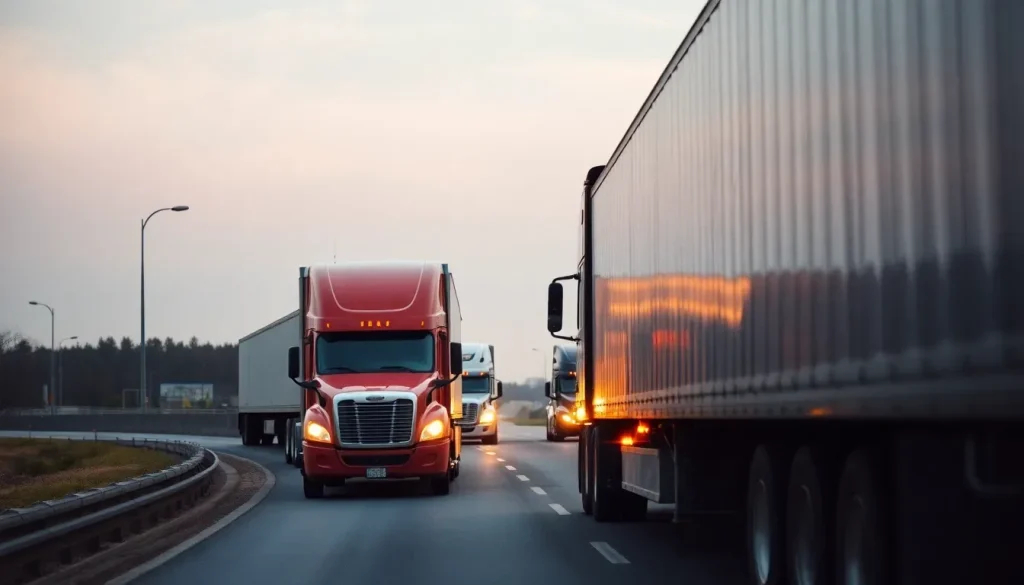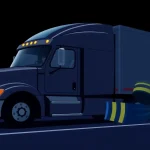Trucking Oversight Remains Stable During U.S. Government Shutdown

The trucking industry is a vital component of the U.S. economy, moving approximately 72.5% of all freight tonnage. However, the current political climate, coupled with the government shutdown, has raised concerns about its oversight and funding. Despite these challenges, it's crucial to understand how the industry is navigating through these turbulent waters.
As the trucking sector continues to operate under the pressures of a government shutdown, it is essential to examine the implications on oversight, funding, and the future of the industry as a whole.
Current operations in the trucking oversight landscape
Amid the ongoing U.S. government shutdown that began on October 1, employees at the Federal Motor Carrier Safety Administration (FMCSA) and other key highway safety agencies remain actively engaged in their roles. These employees continue to receive their paychecks, ensuring that essential functions in the trucking sector are not disrupted.
The Department of Transportation (DOT) emphasized that “all operations continue as normal,” as outlined in their shutdown preparation document. Funding for FMCSA roles primarily comes from authorized contract authority and is drawn from the Highway Trust Fund, which is maintained through annual appropriations.
While the shutdown has resulted in the furlough of approximately 750,000 federal employees, the FMCSA is operating without any furloughs among its 1,084 staff members. This is also true for the Federal Highway Administration (2,268 employees) and the National Highway Traffic Safety Administration (574 employees), ensuring that critical operations continue uninterrupted.
However, other agencies within the DOT, such as the Pipeline and Hazardous Materials Safety Administration and the Federal Railroad Administration, are experiencing some furloughs. Additionally, the Federal Aviation Administration has seen significant staff reductions, with 11,000 employees furloughed and 13,000 air traffic controllers required to work without pay.
According to DOT, plans are in place for an orderly recall of employees once annual appropriations are restored, allowing normal operations to resume efficiently.
Highway funding remains secure during the shutdown
The DOT has confirmed that there are sufficient funds available to reimburse states for ongoing highway projects and maintenance for several months. These funds stem from previous appropriations, the Highway Trust Fund, and the Infrastructure Investment and Jobs Act, which was enacted in November 2021.
It is important to note, however, that not all infrastructure projects are insulated from the effects of the shutdown. For instance, on October 1, the Trump administration announced a hold on $18 billion earmarked for New York’s new train tunnel under the Hudson River and a subway project in New York City.
DOT indicated that project reimbursements cannot be processed until its administrative review is completed. They stated, “Thanks to the Chuck Schumer and Hakeem Jefferies shutdown, however, USDOT’s review of New York’s unconstitutional practices will take more time. Without a budget, the Department has been forced to furlough the civil rights staff responsible for conducting this review.”
Future outlook for the trucking industry
As the trucking industry navigates through the current challenges, many stakeholders are pondering the future of their operations. Several factors will play a significant role in shaping the landscape for trucking in the coming years:
- Technology Adoption: The integration of technology in trucking, such as autonomous vehicles and AI-driven logistics, will revolutionize operations.
- Regulatory Changes: Ongoing regulatory adjustments can either facilitate or hinder growth opportunities for trucking companies.
- Labor Market Dynamics: The industry faces a persistent driver shortage that requires strategic solutions, including better wages and working conditions.
- Sustainability Initiatives: Increasing pressure to adopt greener practices will influence operational choices within the sector.
- Economic Conditions: Fluctuations in the economy can directly impact freight volumes and demand for trucking services.
In light of these factors, it remains uncertain whether the trucking recession has come to a close. Industry experts are divided, with some arguing that signs of recovery are evident, while others caution that underlying challenges persist.
Trucking industry regulations and oversight
The regulation of the trucking industry primarily falls under the purview of the FMCSA, which is tasked with ensuring safety and compliance standards. Some key responsibilities of the FMCSA include:
- Driver Safety: Implementing regulations regarding driver qualifications and hours of service.
- Vehicle Standards: Establishing safety standards for commercial motor vehicles.
- Inspection and Compliance: Conducting regular inspections and enforcing compliance with federal regulations.
- Data Collection: Gathering and analyzing data to inform policy and improve safety measures.
This regulatory framework is crucial to maintaining safety on the roads and ensuring that the trucking industry operates efficiently and effectively.
What does the future hold for trucking in 2025?
Looking ahead to 2025, there are several potential developments that could reshape the trucking industry landscape:
- Increased Investment: As infrastructure funding continues to flow, expect enhanced investment in roads and freight facilities.
- Workforce Development: Efforts to attract and retain drivers will likely intensify, leading to more training programs and educational partnerships.
- Enhanced Safety Protocols: Innovations in safety technology, including collision avoidance systems and driver monitoring, may become standard.
- Integration of Green Technologies: The transition to electric and alternative fuel vehicles will likely accelerate, driven by sustainability goals.
The trucking industry stands at a crossroads, with opportunities and challenges on the horizon. Stakeholders must remain vigilant and adaptable to leverage emerging trends while navigating potential obstacles.
For further insights on the evolving dynamics of the transportation sector, consider watching this informative video:
As the trucking industry continues to adapt and respond to these changes, it is essential for all stakeholders to stay informed and engaged in discussions surrounding the future of transportation in the United States.




Leave a Reply